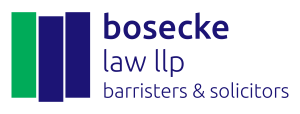
Conventional Mortgage vs HELOC: Do You Know The Difference?
Definition: HELOC is a Home Equity Line of Credit.
It used to be that only professional estate agents could understand the details of home mortgages, with the buyer having only a peripheral understanding of the process. But today there are many homeowners who are doing it for themselves, thanks to the abundance of information available on the internet. Despite the information available, there is still plenty of information that can be confusing and costly and could use the help of an Edmonton Real Estate Lawyer.
If anything was learned from the adjustable rate mortgage disaster, it is that owning a home isn’t as easy as it’s often made to be. This is particularly true of the mortgage and how it is paid. Many potential homeowners want to know the difference between a conventional mortgage and a home equity line of credit (HELOC).
What Are They?
A conventional mortgage usually requires a loan for most people, with a significant down payment that is a small percentage of the borrowed amount. The conventional mortgage is paid down at a specific amount each month plus interest.
A HELOC also known as a home equity line of credit, is a line of credit that is basically granted to your home. A HELOC allows the homeowner to borrow money against the home up to the available equity on the home. This allows you to borrow and re-borrow against your home, but if the HELOC isn’t paid your home is the collateral.
The best course of action is to have an Edmonton Real Estate Lawyer provide you with in depth information about both products.
What’s The Difference?
One of the main differences between a conventional mortgage and a HELOC is the rates. A conventional mortgage comes in different types of rates, namely fixed and variable. Most homeowners opt for the fixed rate mortgage because it makes it easier to budget and plan for payments with a rate that is guaranteed for the life span of the mortgage.
HELOC rates on the other hand, can be increased at any time, usually with short notice to the homeowners. Make sure you read the fine print on HELOCs so you can anticipate potential payment increases.
Perhaps one of the most enticing differences between the two is that a HELOC is open, which means you can pay as much as you want on it without a penalty. You can pay it off early and there are no limitations on early payments, unlike conventional mortgages that place limits on what a homeowner can pay in a year. If you pay more than the allowed amount within a specified time frame (usually per year), you will be charged a penalty.
This ability to pay as much as you want on HELOCs means that you’re only paying interest on what your remaining balance, compared to a conventional mortgage which calculates interest every 6 months on the balance. This may seem ideal until you realize that your payment increases ever so slightly, the end result being that your interest payments can be as much as three times the cost of the home.
Which Is Better?
It seems obvious that the HELOC comes with much more freedom than a conventional mortgage, but that doesn’t mean a HELOC is right for you. If you don’t make a lot of money or don’t have sufficient savings you may find that a fixed rate mortgage allows you to make sure payments are made on time regularly. With the roaming rate on a HELOC, the interest can easily cause a spike in your monthly budget, even while paying the minimum interest.
To find out which option is best for you, speak with your Edmonton Real Estate Lawyer. A real estate lawyer can outline the benefits and disadvantages of each for your specific financial situation.
To get started or if you have any more questions you need to get answered:
